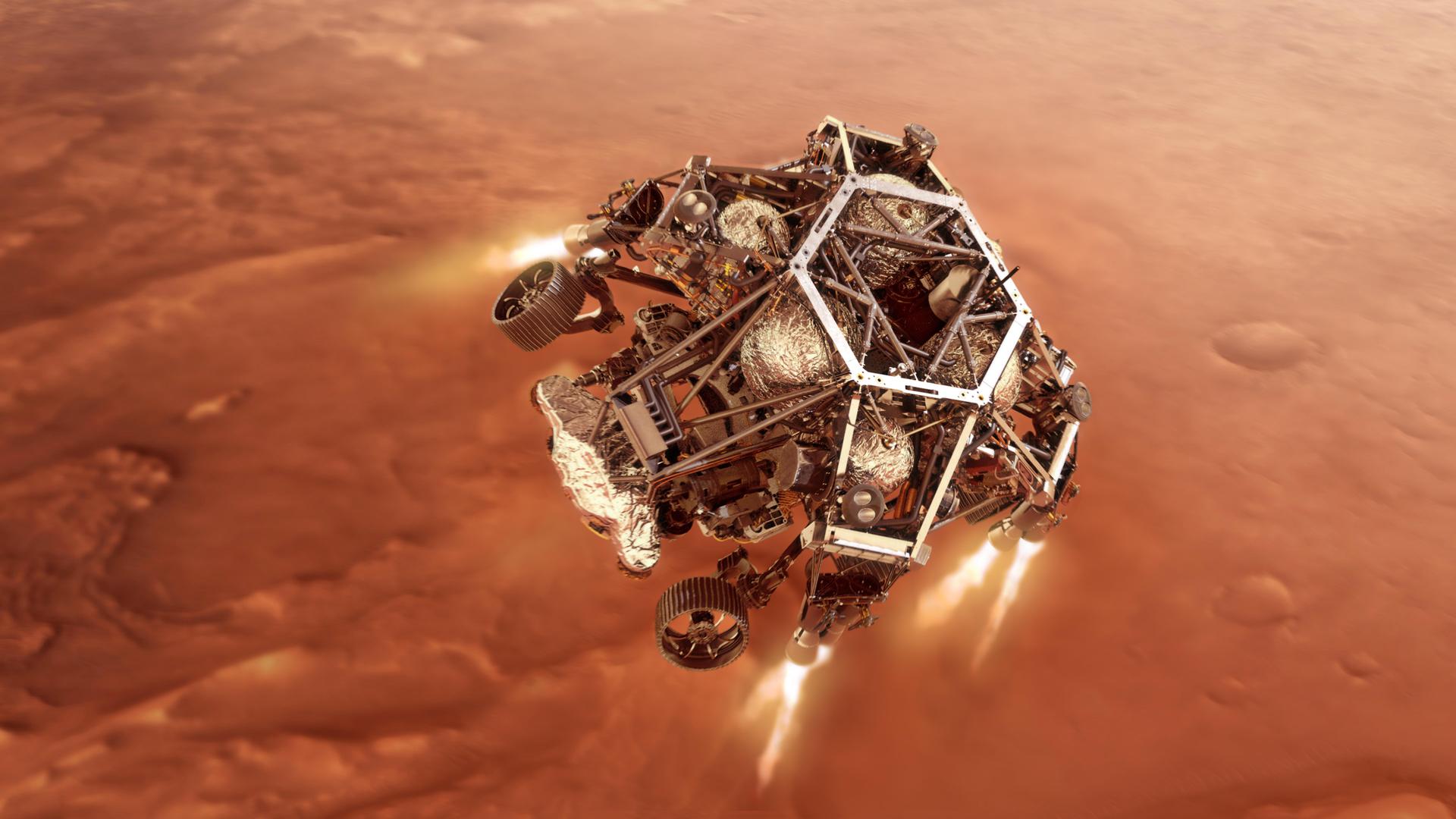After roughly seven months and 293 million miles of traveling, NASA’s latest rover is nearing its destination: Jezero Crater on Mars. The area is thought to have once been home to a body of water the size of Lake Tahoe and the rover, known as Perseverance, will be using its array of instruments to search for signs of ancient life. Oh, and did we mention it’s also packing a remote-controlled helicopter drone named Ingenuity?
What We’ll We See?
NASA will be livestreaming the craft’s entry, descent, and landing (EDL) on Thursday, February 18th so we can all follow along here on Earth. The EDL phase kicks off when Perseverance approaches the top of the Martian atmosphere and marks what NASA engineers have informally called “seven minutes of terror” — the approximate time it’ll take for the rover to land.
You’ll be able to tune in as engineers await confirmations for key events like atmospheric entry, parachute deployment, and (hopefully) a safe and successful touchdown.

Source: NASA/JPL-Caltech
How to Watch
Special Perseverance coverage is scheduled to start at 12:30 PM ET with a live stream for students. Prior to the landing, NASA will be airing a live chat starting at 1 PM ET, with landing coverage starting at 2 PM ET. You can catch it all on NASA TV, which is available on NASA’s official YouTube channel.
You can also access NASA TV via a variety of streaming platforms and services, including devices from Roku, Apple, and Amazon. You can also tune in on Hulu.
Featured image: NASA/JPL-Caltech

